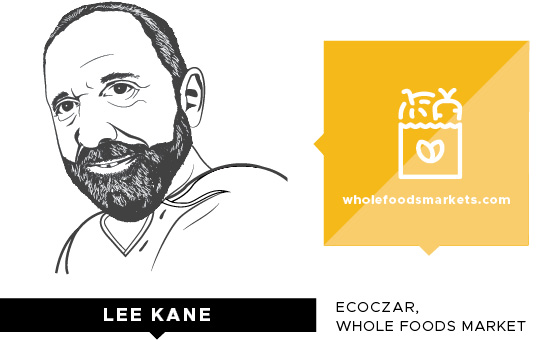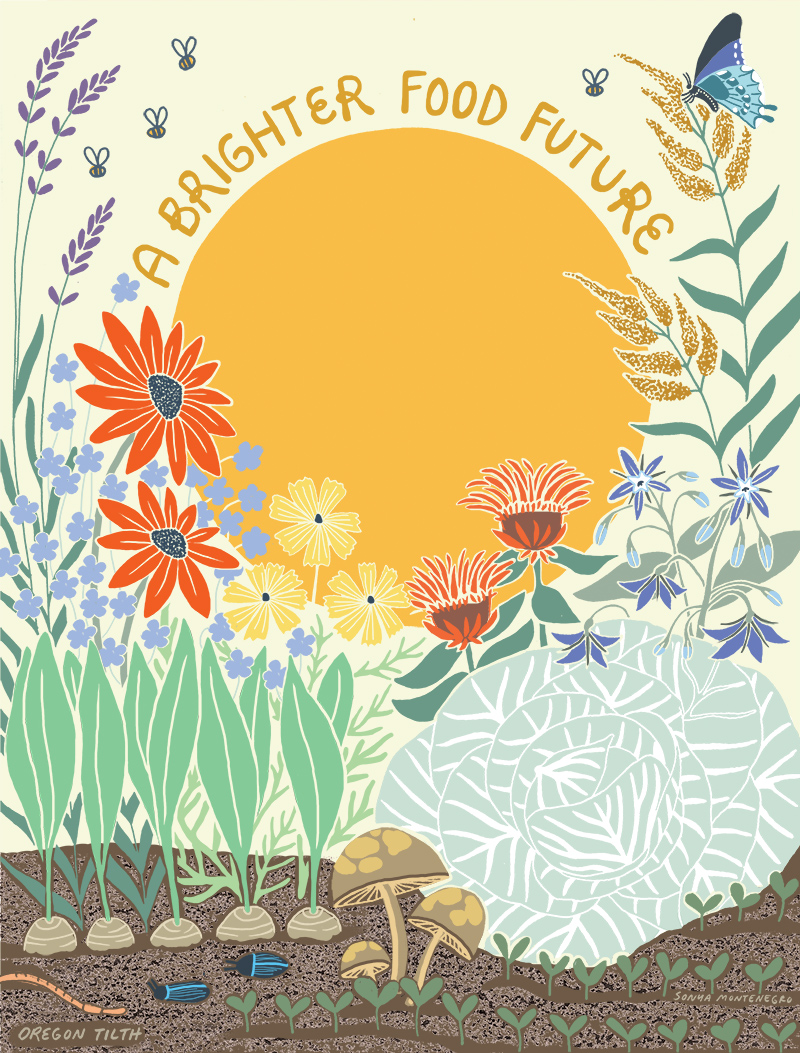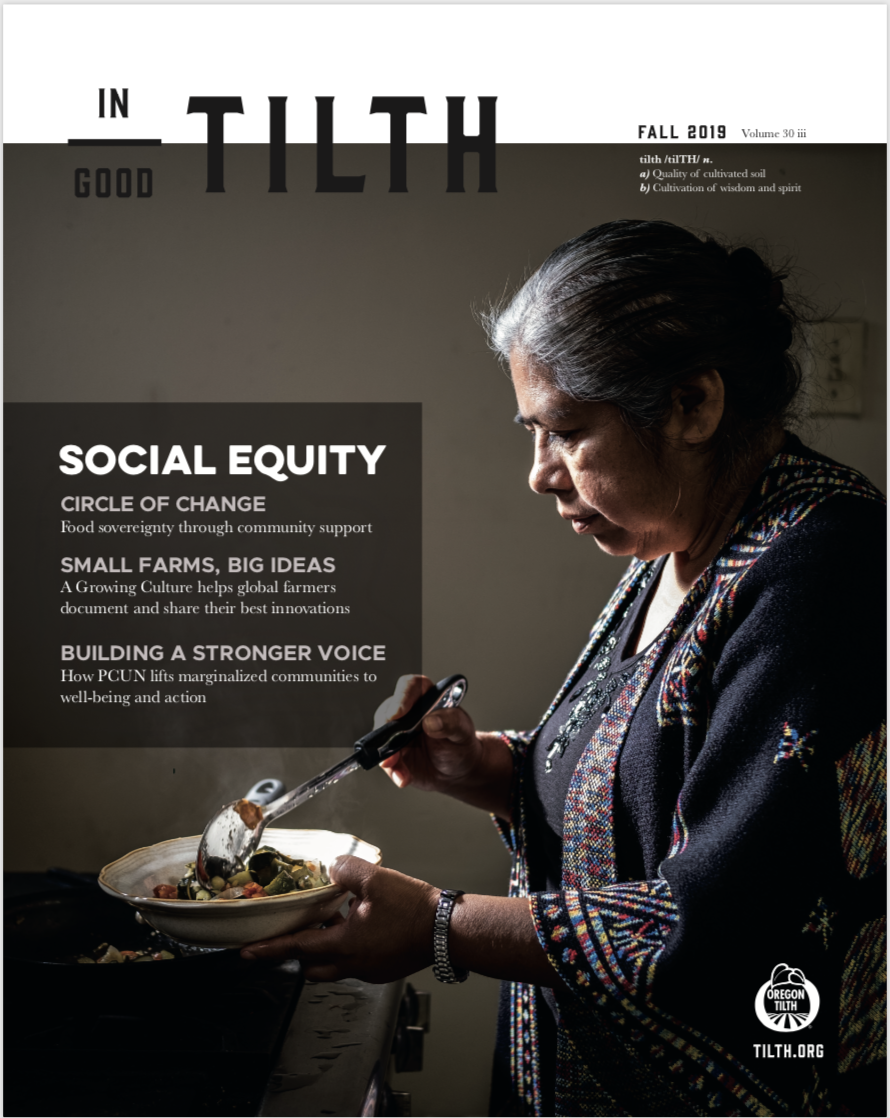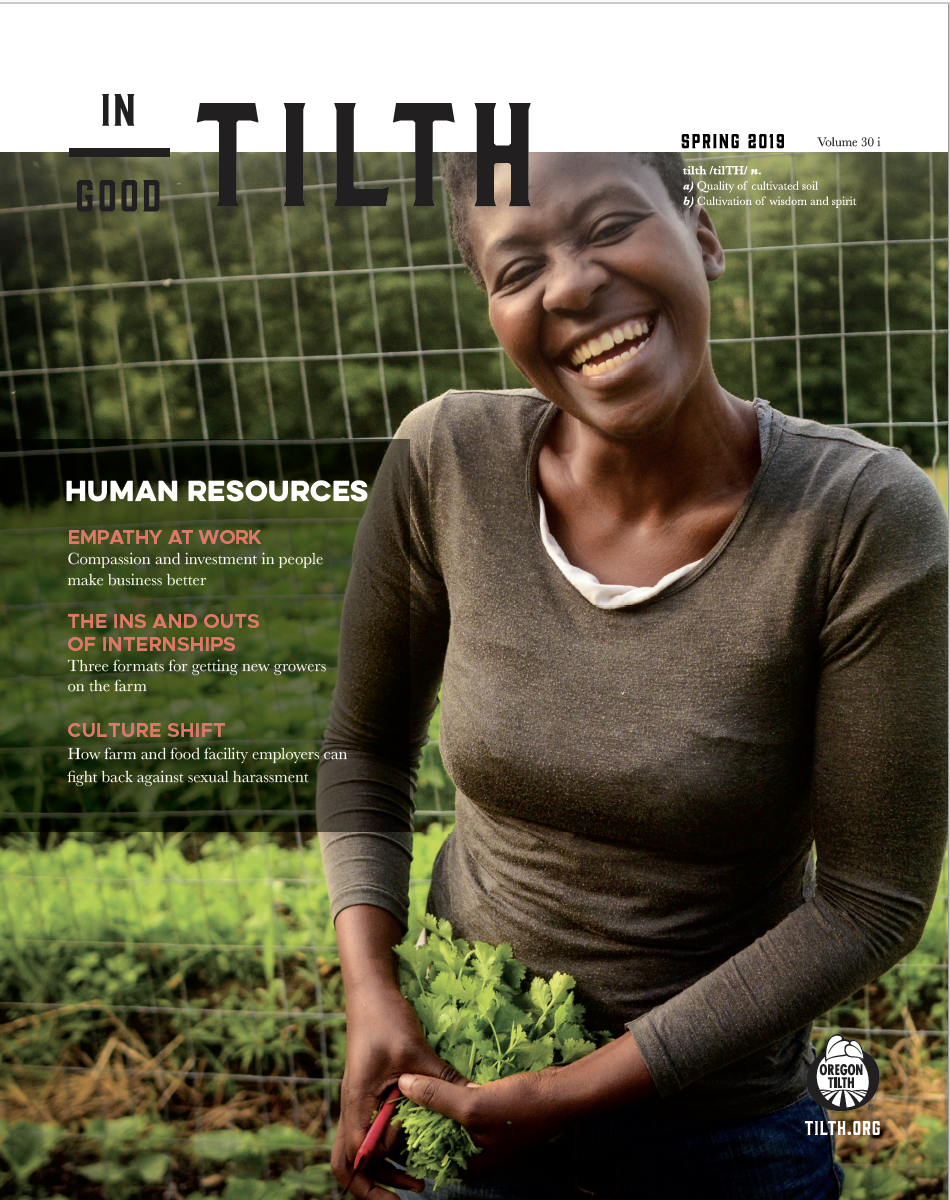Hear from some of the leading changemakers and visionaries helping create a brighter food future. Each issue we chat with a farmer, a chef, a consumer advocate and a food producer, learning about what challenges and opportunities we face across all parts of our food system on a specific topic.

Why is pollinator health and conservation important to you?
Conservation and land stewardship are at the heart of our operation. Almost 25 percent of our 5,600-acre farm is in some sort of non-crop conservation. Healthy pollinators are linked to other positive conservation outcomes. For us, pollinators serve as an indicator for a more intact ecological system.
How do you make decisions to support pollinators?
Our farm layout is based on conservation. Our fields are not farmed in large blocks; rather we farm 240’ crop strips which have 30’-60’ of conservation buffers between each of those. The conservation buffers serve as wind erosion protection and snow catch buffers. They are also habitat for wildlife and pollinators. Our crop rotation is also a significant component of our stewardship. Using a 5- or 7-year rotation of small grains, pulses, and oilseeds/broadleaves coupled with significant cover cropping we focus on working with our soil. Pollinators are key for some of our flowering crops; in turn, we provide a food source for our pollinators.
What can farmers do to help highlight the value of biodiversity in farming?
For us, building thoughtful relationships with the ecology of our farm in ways that support all sorts of diversity is a risk management strategy. Crop rotations and diverse cropping systems, building soil health and increasing pollinator conservation make up some of our risk management practices. Additionally, seeding conservation buffer strips to native pollinator habitat and enrolling in USDA Natural Resources Conservation Service’s Conservation Reserve Program brings in a diversity of pollinator as well as financial support and education from the USDA.

[Edit: Bee Thinking closed in June 2017, but you can still find Matt and Jill’s work at Bee Built.]
Why is pollinator health and conservation important to you?
We are like so many others who care about nature and worry about the effects of global warming and large-scale commercial agriculture. We had both been long concerned about the environment (and Matt with all indicator species) when we had a chance encounter with a single honeybee that made us curious to know more about the colony as a superorganism. That was in 2008.
Immediately after, we gained our first honeybee hive for our backyard and began building more in our garage. As we began producing hives that had fallen out of fashion due to the rise of commercial agriculture, Matt blogged about the research and building process. Within weeks people started contacting us to buy our hives. Little did we know, there was an audience for non-commercial style hives.
There are tens of thousands of types of bees and many other types of pollinators. Each is important to its ecosystem. This is what motivates us. Natural disasters, loss of habitat and the introduction of non-native plants and predators are contributing to bee losses. Last year, seven bee species in Hawaii were placed on the Endangered Species List. Pollinator health and community pollination are paramount to us as parents, as business owners and citizens of the world.
How do you make decisions to support pollinators?
We host many of our beekeeping classes at our two-acre organic garden and apiary; filled with xeric and native plants, it is a special place to introduce beekeepers to the idea of the garden as an ecosystem. While our honeybee classes are extremely popular, we also offer classes throughout the year on promoting mason bees and native pollinator habitats, as well planting for pollinators classes. Our Mason Bee Day welcomes the community to learn about supporting mason bees, leafcutter bees and other native pollinators
Additionally, we are the only Forest Stewardship Council certified hive producer. We began our business using reclaimed lumber, but our need was often greater than available supply. We don’t want to harm the forests or ecosystem while producing hives. Becoming FSC certified chain-of-custody was vital to us and our customers.
While I hope that the business—our vast education offerings and resources, incredible customer support and regular support of local nonprofits like Xerces Society, Zenger Farms and Schoolyard Farms—shows how we are supporting pollinator conservation, we will always expand our education around honeybees, native bees and other pollinators.
What can businesses do to help highlight the value of biodiversity in agriculture?
We must raise awareness about: the costs of monoculture, the value of crop diversity and ultimately the creation of continual food sources for pollinators is important. Simply pointing out the staggering numbers of honeybee colonies required to pollinate the almonds in California (over 1.5M), flips a switch in everyone we talk with. The vast food desert for native pollinators due to monoculture cropping systems is a tragedy.

Why is pollinator health and conservation important to you?
Pollinators are responsible for the majority of fruits and vegetables we eat. Most people think of produce like tomatoes and berries, but it goes well beyond that. Think of all the specialty foods we love—coffee, chocolate and vanilla— just to name a few. We need pollinators to grow crops, to feed dairy cows and even seed production for root vegetables.
My connection to pollinators began when my wife and I moved to New Zealand in 2004, where she studied pollination and eventually, honeybee health in grad school. It’s also where I began cooking. I ended up working at Otahuna Lodge, a small luxury hotel and farm. From the beginning, I was involved in the growing process because the menu was shaped by the day’s harvest.
Amber and I moved back to California in 2010, where I began cooking at Chez Panisse Cafe, and Amber started working in Claire Kremen’s lab at UC Berkeley, studying native bee pollination. We’ve always been at two different ends of the food system, informing each other greatly.
How do you make decisions to support pollinators?
A diverse cropping system gives pollinators a more balanced source of food. Eating white bread every day would probably make you pretty sick, it’s the same for pollinators. They need a healthy diet. Farms that have hedgerows or are surrounded by natural habitat help support these needs. I do my best to buy from those types of growers and try to visit the farms when possible.
Napa Hillside Farm is one of our growers, and they have some of the best produce I’ve ever seen. They are nestled in foothills surrounded by natural habitat. I have been fortunate to work closely and develop a partnership with the owner, Chris. We use whatever surplus he has and in exchange, he grows some crops that I specifically request. This is a unique opportunity, and it’s challenging to build these kinds of personal relationships in the fast-paced, large operation business for which I’m a part owner. But it’s important to me to support this type of farming, which is good for the overall health of the land and the quality of the products. When farming supports healthy pollinator communities, we get more delicious fruits and vegetables. It’s a benefit for the farmer and it makes my food taste better!
What can chefs do to help highlight the value of biodiversity in agriculture?
We need to create a larger demand for biodiverse farming and build it into our food costs to be able to pay the premium required to support it. I feel a social responsibility to provide healthy and nutritious food while supporting local growers who have resilient farming practices.
As a chef, I want to use these products because I believe they taste better, so it’s in my best interest to keep a good supply. You need a food business culture where supporting sustainable farms is the word of God. During my time at Chez Panisse, this philosophy was instilled in me. This atmosphere makes it easy for staff to have small—but important—conversations about the produce and where it comes from. If someone mentions how delicious that tomato was, it becomes an opportunity to say why the tomato is so delicious. Or even if they are giving critical feedback, that’s another great opportunity. It takes significant work, but I think it’s the best way.

Why is pollinator health and conservation important to you?
I have been a lifelong passionate environmentalist and ecologist. In fact, in 2003, I became Whole Foods Market’s first “official” Ecoczar (green mission specialist). Dr. Barry Commoner, an early and beloved mentor, taught me his first law of ecology: “Everything is connected to everything else.” There is one ecosphere for all living organisms and what affects one, affects all. Humans and other species are connected to and dependent on each other. With this in mind, it becomes hard to practice anything other than compassion and harmlessness.
In 2010, when we were all discovering the mysterious disappearance of honeybees from Colony Collapse Disorder, two things happened simultaneously. I learned as much as I could about the plight of honeybees—including becoming a beekeeper—and I helped to create and mobilize a team within Whole Foods Market to bring the plight of pollinators to the awareness of our internal and external stakeholders. This now known as our “Plant Seeds, Protect Pollinators” initiative,
Whole Foods Market, recognizes that as important players in the worlds of both food and sustainability, we have a major role to play in engaging all our stakeholders around pollinator conservation awareness and in attainable calls to action for each of those stakeholder groups.
How do you make decisions to support pollinators?
Through my role as a “Mission, Culture and Higher Purpose Coach” and in our annual pollinator campaign, I try to teach as many stakeholders as I can about the delicate web of our food system.
As a consumer who has eaten almost exclusively organic and biodynamic foods for many years, awareness of the positive impact those two major agricultural practices have on the entire ecosystem has always been extremely important to my family.
What can retailers do to help highlight the value of biodiversity in agriculture?
One of the most powerful components of Whole Foods Market’s “Share The Buzz” campaign over the last several years is our “Your Supermarket Without Pollinators” photo series. It is a photo representation of a particular department in a Whole Foods Market store, shown as it looks currently, side-by-side with how it would look if there were no pollinators. I can’t think of a better example of “a picture being worth a thousand words.”























